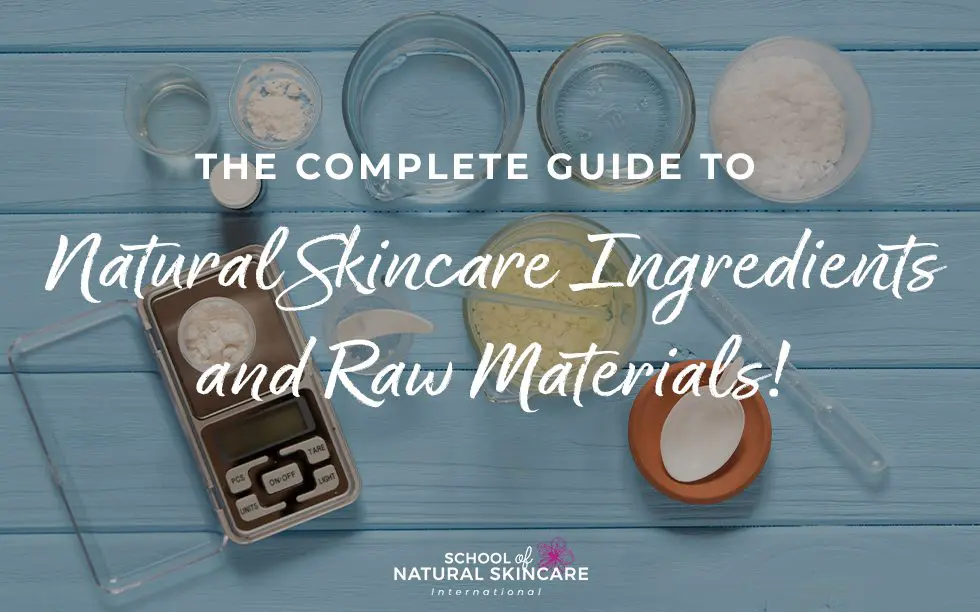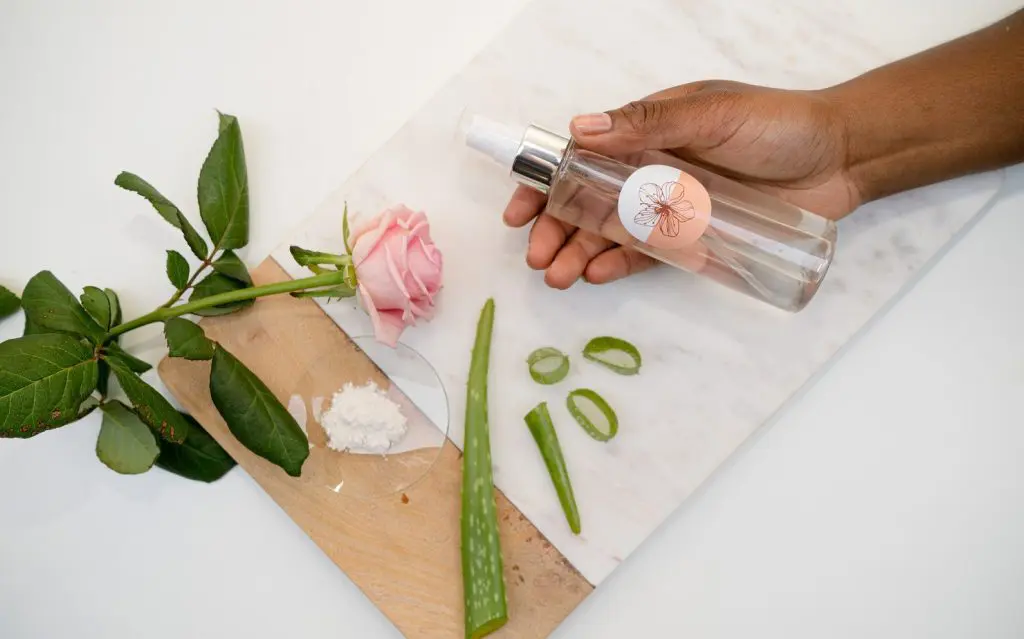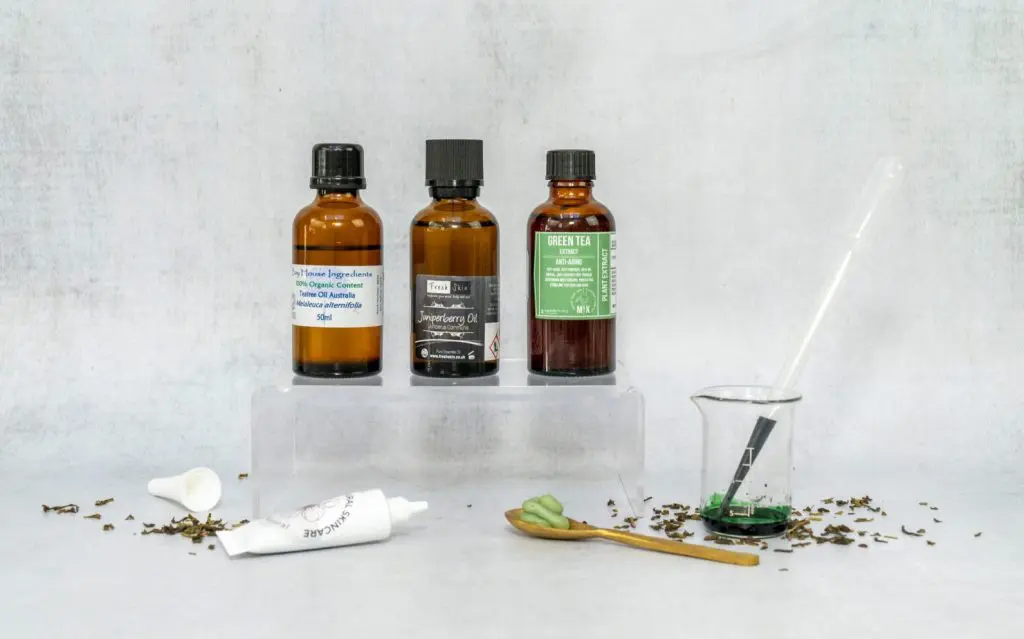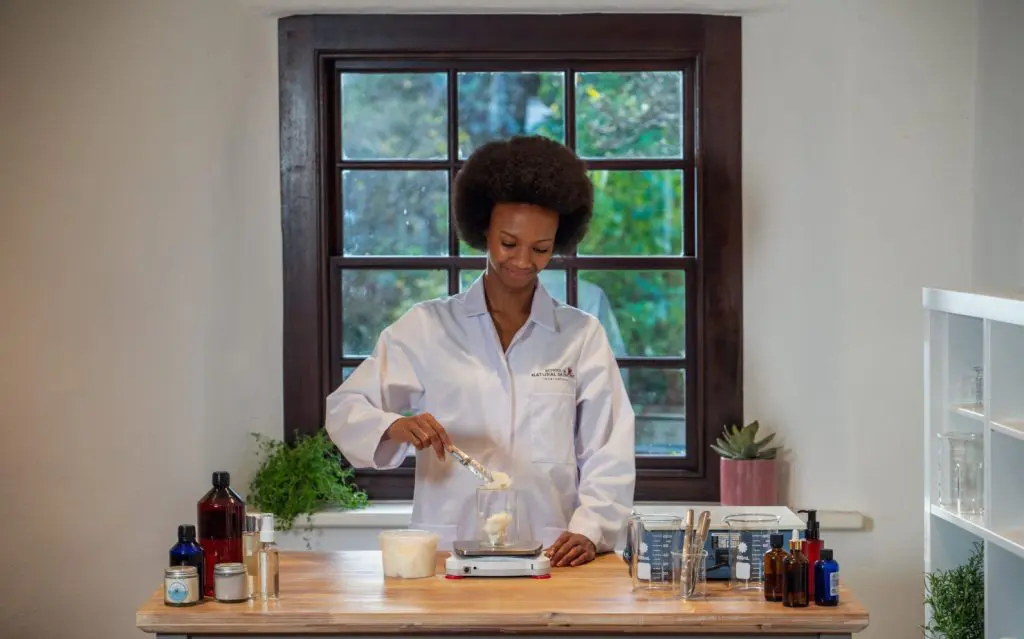When it comes to formulating your own natural skincare products, whether for yourself, family and friends, or to sell, there are a few things that can really help you to make sure your products are the very best they can be.
One of those things is having good knowledge of natural and organic ingredients, and access to reliable and up-to-date ingredient information. The better you know your ingredients, the easier it will be to create your own products.
But with so many ingredients to choose from, it can be hard to retain all that information. Also, with so much incorrect and inaccurate information being shared around online, books that go out of date very quickly and new ingredients being discovered on a regular basis, it can be hard to keep up.
Finding and having access to a reliable, accurate and, more importantly, up-to-date guide is what every natural skincare formulator and budding natural beauty entrepreneur needs and wants but it is very difficult to find.
That’s why we put together The Complete Guide to Natural Skincare Ingredients and Raw Materials! This 600+ page textbook can be found inside our Diploma in Natural Skincare Formulation and is what students and graduates use to formulate their own professional quality natural and organic skincare products.
Often you find books that cover one area, such as carrier oils or essential oils, but our Complete Guide covers the entire spectrum.
You’ll find lipids, carrier oils, esters, waxes, butters, essential oils, hydrosols and fragrances, thickeners, stabilizers, solubilizers, thickeners, emulsifiers, preservatives, antioxidants, humectants, clays, powders, sals and exfoliants, vitamins, botanical extracts, hydrosols, pH adjusters and so much more!
You’d be hard pushed to find anything that compares to this anywhere and students and graduates use it as a reference guide for years after completing their studies. It is one of the things students of the Diploma in Natural Skincare Formulation love the most.
And what can be more handy to a formulator than a library of information about natural cosmetic ingredients and raw materials?
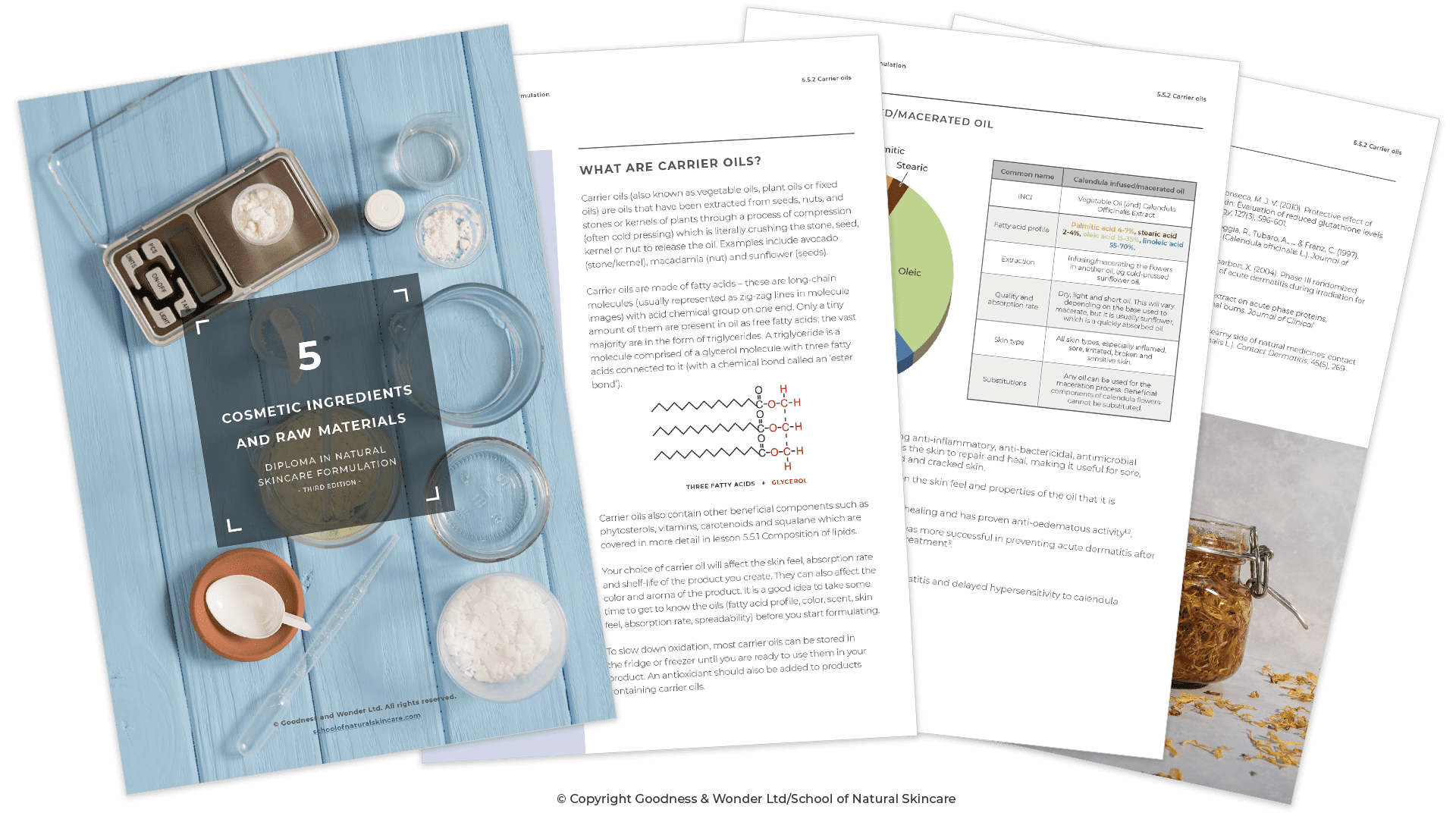
An ingredients guide at your fingertips!
We have dedicated an entire module in the Diploma of Natural Skincare Formulation to the topic of natural skincare ingredients and raw materials. In it we have created a complete guide to all of the ingredients and profiles featured in the course.
The comprehensive guide, among many other things, includes:
- Descriptions and explanations of the different categories of ingredients.
- A detailed profile for each ingredient that also includes the usage guidelines (percentages and in what phase of a formula to use each) which is somewhat difficult to find.
- A number of scientific papers for further research.
This is a complete reference guide to natural skincare ingredients and raw materials.
When you enroll onto our Diploma in Natural Skincare Formulation, you’ll find this guide in Module 5: Cosmetic Ingredients and Raw Materials.
What is more, you can download this, save it to your own files and refer to it as often as you like for years to come.
Below is a breakdown of what’s included in this module, but you can also see the same information on the course page on our website, or in the prospectus.
This is just one module of 14 that can be found in the Diploma, created by scientists, formulators and aromatherapists; qualified experts who are passionate about natural and organic cosmetics.
The course contains up-to-date ingredient information based on scientific papers, the latest research, industry guidelines and standards.

A breakdown of natural ingredients and raw materials
What’s included with Module 5: Cosmetic Ingredients and Raw Materials:
In module 5 you’ll select ingredients and cosmetic raw materials appropriate for your formula with confidence by applying your knowledge of the functions, properties and benefits of a wide range of ingredients.
5.1 Classification of ingredients/raw materials
Ingredients fall into different categories and it is important to understand which category they belong to so you can formulate with them effectively.
5.2 Compatibility of ingredients/raw materials
How do you know which ingredients are compatible with one another? Discover six properties of ingredients that affect their compatibility.
5.3 Ingredients and functions: an overview
This lesson will provide an overview of the ingredients covered in this module and indicates within which lesson you can find further information.
5.4 Researching ingredients/raw materials
With so much unreliable or incorrect information online and in books, how do you know where to find accurate and reliable information about ingredients? We share our top recommendations with you.
5.5 Lipids
Lipids are a key ingredient in natural skincare products; they soften the skin, help the skin retain its moisture and support the skin’s barrier function. Discover the functions and benefits of lipids, how they are extracted and processed, and about comedogenicity.
5.5.1 Composition of lipids
Discover the chemistry of lipids, and take a deep-dive into fatty acids, unsaponifiables and vitamins.
5.5.2 Carrier oils
Carrier oils offer different benefits to the skin and contribute different properties and qualities to your skincare products depending on their composition. Discover 35 carrier oils in detail.
5.5.3 Esters
Esters are a special kind of emollient with a light, silky skin feel that are an ideal replacement to silicones. Discover natural ester options to use in your formulations.
5.5.4 Butters
Butters are rich and creamy and a delightful addition to cosmetics! Learn about a range of butters, including some exotic options.
5.5.5 Waxes
Waxes play a number of important roles in cosmetics. Discover both vegan and non-vegan options including a detailed comparison guide.
5.5.6 How to select lipids for your formulations
With so many lipids to choose from, how do you select which to use? We share nine key factors to consider.
5.5.7 Getting to know your lipids
Lipids need to be experienced first-hand to be understood properly. Our useful worksheet will take you through the process of getting to know your lipids.
5.6 Humectants
Humectants are ingredients that attract water from the atmosphere to the skin and bind it there. Humectants work with emollients and occlusives to keep skin moisture at optimal levels. Discover seven natural humectants and how to use them.
5.7 Clays, powders, salt and exfoliants
A variety of dry raw materials are useful in cosmetics and they have a number of different functions such as absorbing oil, exfoliating, and adding color and visual appeal.
5.8 Active ingredients
Active ingredients are high-performance ingredients that offer a special benefit to the skin.
5.8.1 Antioxidants
Antioxidants have two main functions: to extend the shelf-life of cosmetics and to provide benefits to the skin. Learn about a variety of natural antioxidants.
5.8.2 Vitamins
Learn about three vitamins that are a very beneficial addition to skincare products: Vitamin B3 (Niacinamide), Pro-vitamin B5 (Panthenol) and Vitamin E. Discover their benefits and how to successfully incorporate them into your formulations.
5.8.3 Botanical extracts
Botanical extracts are a vast category of ingredient! Learn about all the different ways they can be extracted and the types of formula you can use them in. Then we look at 21 botanical extracts in detail.
5.9 Essential oils, hydrosols and fragrances
Learn about fragrancing cosmetic products and key considerations when using essential oils, such as how they work, how much to use, how to use them safely and phototoxicity.
5.9.1 Essential oil quick reference chart
A handy reference chart to use when formulating.
5.9.2 Essential oil profiles
Essential oils have many benefits for the skin such as being antiseptic, astringent or anti-inflammatory and also provide a wonderful fragrance to cosmetics. We provide 24 detailed essential oil profiles.
5.9.3 Getting to know your essential oils
We share our well-loved method for really getting to know your essential oils.
5.9.4 How to choose and blend essential oils
Use our helpful tips to create synergistic essential oil blends.
5.9.5 International Fragrance Association (IFRA) guidelines and calculating allergen levels
A step-by-step guide to calculating essential oil allergen levels and when to include allergens on your label.
5.10 Functional ingredients
Functional ingredients make a product work. They have a specific function or deliver a certain benefit.
5.10.1 Natural emulsifiers for creams and lotions
Emulsifiers are a key functional ingredient in cosmetics. Learn about what emulsifiers are, how they work and why they are used in cosmetics. Discover 13 natural emulsifiers for making creams and lotions, including palm oil-free emulsifiers.
5.10.2 Emulsifiers for self-emulsifying oils and oleogels
Create innovative oil-to-milk and gel-to-milk cleansers, scrubs and bath and shower oils with special self-emulsifying emulsifiers. Discover exciting new ingredients and how to use them.
5.10.3 Thickeners
Discover a variety of natural oil and water phase thickeners for viscosity modification. Create gels, thicken formulas and improve emulsion stability.
5.10.4 Solubilizers
Solubilizers are required to add oil soluble ingredients such as essential oils into a water-based product, like facial toner, body spritzer or gel. Learn about several natural solubilizer options.
5.10.5 pH adjusters
Testing and adjusting the pH of cosmetics is a crucial step! Discover how to choose an appropriate pH adjustment solution.
5.11 Natural colorants
We explore a variety of ways of coloring your skincare products from using mineral pigments and micas to using the natural color present in a variety of oils and extracts.
5.12 Organizing and storing materials in your lab
Crucial to good manufacturing practice is organizing and storing raw materials properly. Use our useful incoming ingredient (raw material) log to help you.
5.13 Substituting ingredients
If you cannot find a certain ingredient what do you do? We give you a six-step process to finding suitable substitutes.
5.14 Supplier list: cosmetic ingredients and equipment
A list of hundreds of cosmetic ingredient suppliers from all around the world! Plus a shortlist of our favorite in each region.
The most complete natural skincare formulation online curriculum
Our Diploma in Natural Skincare Formulation is the most complete online course teaching you how to formulate natural skincare products from scratch like the professionals. You’ll learn the practice, art and science of natural skincare formulation, create a range of products for yourself, family or friends or to sell, that are safe, stable and effective. To find out more about this being the complete online curriculum, read our article, The Diploma in Natural Skincare Formulation: A Complete and Comprehensive Curriculum.
The way we teach students to formulate their own products is to do so as if they were creating their products for their brand. That way, they are also designing their brand at the same time. If this is done properly, it is hugely effective. Even if you have no intention of launching a brand, your products will be better than you imagine they could be. They’ll still retain their DiY, artisan essence, but they will be professionally crafted. To find out more about how we do this, read our article, The Only Course You Need to Create Your Own Skincare Brand.
Of course, there’s no better way than to actually enroll onto the course. To find out more about the Diploma in Natural Skincare Formulation check out our website or contact us by email using [email protected].
Free Guide
The Beginner's Guide to Formulating Natural Skincare Products (From scratch, like a professional!)
Start creating your own natural skincare products from scratch – rather than simply following recipes!
Learn how to formulate like a pro and discover our top tips for becoming a confident skincare formulator.
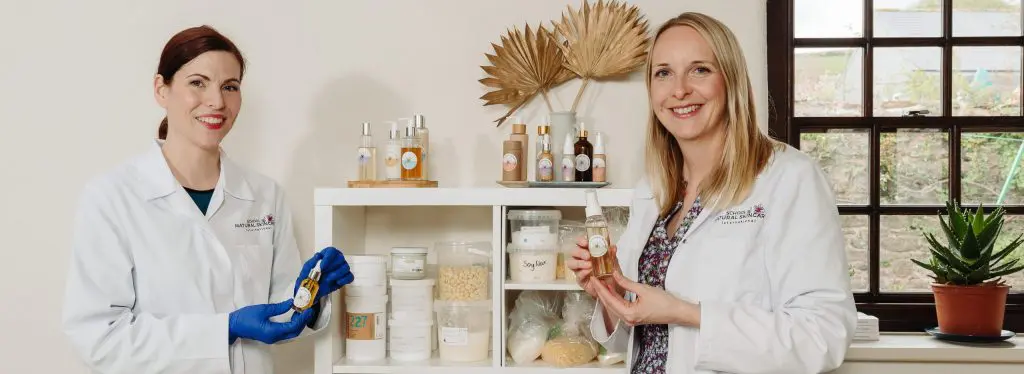
Exclusive for our newsletter subscribers. Sign up now.
We look after your data in accordance with our privacy policy.
Download this fabulous guide and you’ll learn:
- What formulating is and why you need to be doing it!
- The difference between following recipes and formulating your own products.
- Our step-by-step process to designing products people love.
- Four easy ways to personalize your skincare products.
- Choosing the right carrier oils for your beauty products.
- Plus, you’ll get our Safe Product Checklist: How to make sure the skincare products you make are safe and stable
